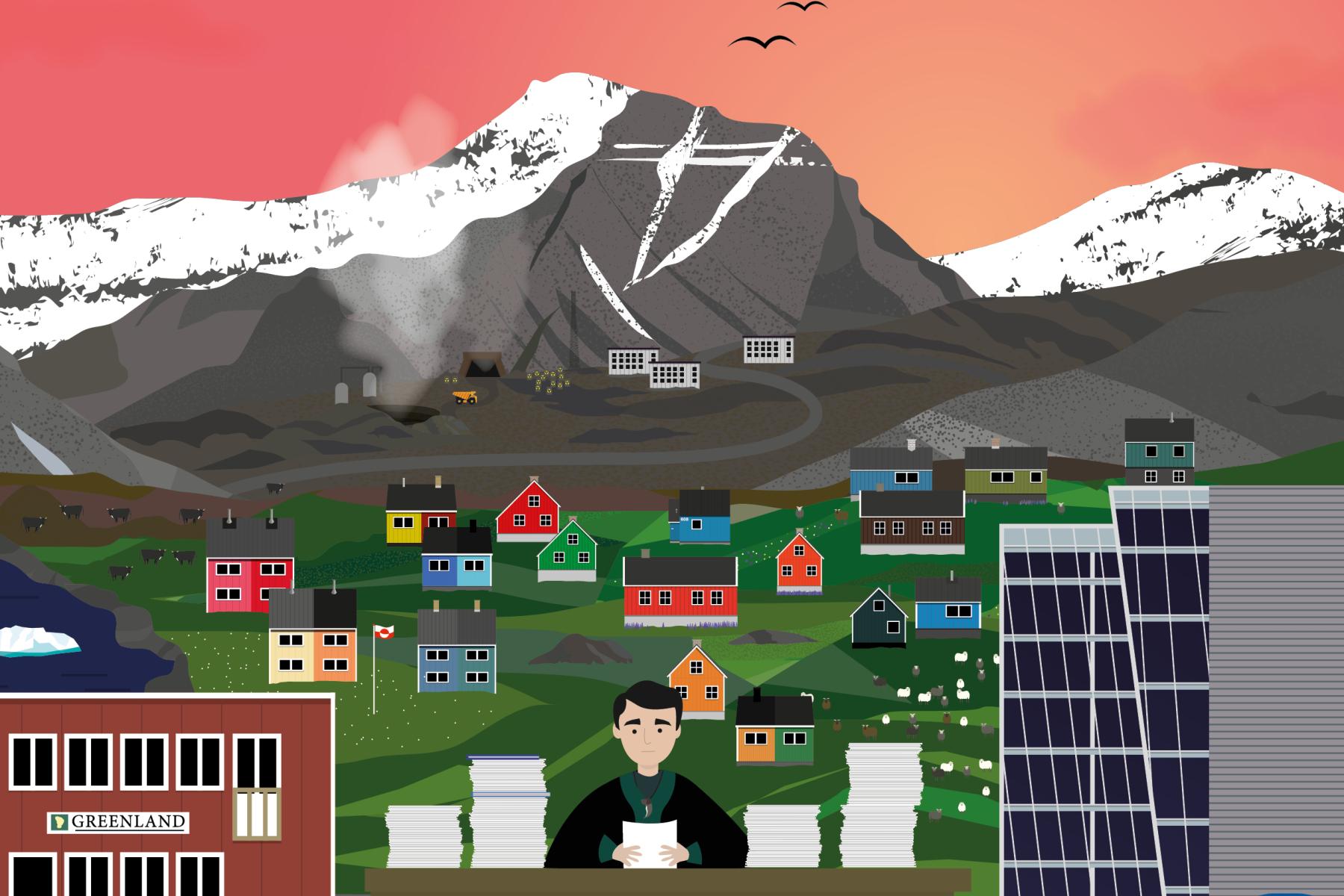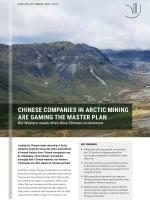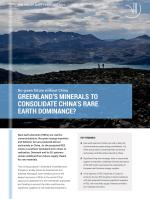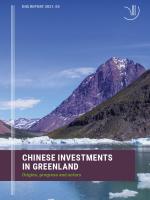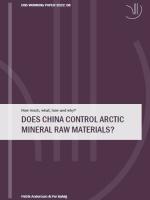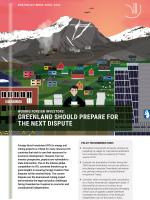Wooing foreign investors: Greenland should prepare for the next dispute

For policy brief in greenlandic click here
Foreign direct investment (FDI) in energy and mining projects is critical for many resource-rich countries that wish to use their resources for economic development. However, from an investor perspective, projects are vulnerable to state intervention. Due to the intense global competition for FDI, countries therefore go to great lengths in assuring foreign investors that disputes will be resolved fairly. The current dispute over the Kuannersuit mining project demonstrates the legal and policy challenges facing Greenland as it aspires to economic and constitutional independence.
The Greenlandic Parliament, Inatsisartut, and Government, Naalakkersuisut, should:
- Strengthen Greenland’s domestic judiciary by preparing its judges for international arbitration as a necessary step in preparing for future waves of FDI.
- Evaluate the desirability of either having the 2005 Danish Arbitration Act put into effect or articulating a separate Greenlandic arbitration law, perhaps along with a model Bilateral Investment Treaty.
- Consider, when revising the draft constitution for a future Greenlandic independent state, if the benefits (in terms of investor trust, institutional autonomy and resources) of keeping a final court of appeals outside Greenland outweighs the drawbacks of not having an independent court of last resort in Nuuk.
To mine or not to mine: Uranium and REEs at Kuannersuit
Both the geological setting and the mineralogy were well researched and documented when, in 2007, an Australian company was awarded the license to explore the Kuannersuit/Kvanefjeld area, right outside Narsaq in Southern Greenland. Exploration activities focused on Rare Earth Elements (REE). Decades of geological research has been published on the deposit since it was first discovered in the 1950s and further explored in the 1970s. Danish authorities were initially aiming to use this potential source of uranium to develop its own civil nuclear energy programme. However, in 1985, Copenhagen decided not to pursue a domestic nuclear programme and, consequently, the exploration of uranium in Greenland was put on hold.
Until 2010, subsoil resources were under the joint jurisdiction of Greenlandic and Danish authorities, and a 'zero-tolerance' practice had developed in relation to uranium. But after achieving exclusive jurisdiction over natural resources, a majority in the Greenlandic Parliament decided in 2013 to nullify the ‘zero-tolerance' policy. The calculus behind the new approach was that a mining boom could go a long way in contributing to financing Greenlandic independence.
However, campaigning for the 2021 Inatsisartut elections focused in large measure on the Kuannersuit project, in which uranium would necessarily surface as a by-product. After the elections, a new parliamentary majority enacted Law 20 of 1 December 2021 to ban prospecting, exploration and exploitation projects involving deposits with more than 100 gr. uranium pr. tonne of rock - far lower than the average uranium content in Kuannersuit.
The Kuannersuit dispute
Pursuant to this new legislation, the Government of Greenland rejected the application for a license to move the mining project at Kuannersuit from the exploration into the exploitation phase. However, Greenland Minerals A/S (GMAS), a subsidiary of the Australian company, argues that their 2007 exploration license grants them a right to receive an exploitation license, given their project met all the required conditions. Thus, GMAS is now requesting that an international arbitration tribunal confirm that they should be given either the green light to proceed with the project or full compensation for their costs and alleged loss of future profits, potentially a sum almost the equivalent to Greenland's national budget for a decade. A British-American capital fund is financing GMAS' litigation against Greenland, paying their costs and legal fees in exchange for a stake in the petitioner’s future monetary compensation or profit from the project.
GMAS included the Kingdom of Denmark as co-respondent in the dispute along with the Government of Greenland, since the first exploration license was issued when responsibility for extraction of natural resources was still under joint jurisdiction. Greenland and Denmark vigorously oppose GMAS’s allegations - both its substantive claims and its involvement of Denmark. But first and foremost, Greenland’s position is that the dispute should be settled in a Greenlandic court. The Greenlandic standard conditions for mineral licenses do provide for international arbitration. But the lawyers representing Denmark and Greenland argue that this does not apply in relation to the decisions disputed in this case, since these Government decisions were bound by law, and the standard conditions refer disputes over such decisions to Greenlandic courts.
Greenlandic standard conditions for mineral licenses do provide for international arbitration. But the lawyers representing Denmark and Greenland argue that this does not apply in relation to the decisions disputed in this case, since these Government decisions were bound by law.
Complexity and trust - now and after independence
Greenland, like other special jurisdictions, offers the foreign investor a rather complex legal landscape. Greenland enjoys wide-ranging independent authority’ in the conduct of its domestic affairs and even far-reaching influence on its foreign relations. But in some areas, Danish law is still applicable, and sometimes even in outdated versions.
In order to clarify some of the current constitutional complexities, Greenland could explore the possibility of drafting its own international arbitration statute. Moreover, the enactment of separate domestic legislation could serve to protect Greenland’s unique ecological and social policy interests. An example of how Greenlandic law might approach the interjurisdictional complexities surrounding international disputes in the context of natural resources is found in the 2023 revision of the Greenlandic Mining Act. Here, the Court of Greenland is designated as the court of first instance for cases involving mining, thereby guaranteeing an appeal as of right to the High Court in Denmark.
The revision indicates a realisation in Greenland that highly qualified legal expertise is needed in disputes involving complex commercial projects and international litigants. But it also invites reflection on how to best organise the local court system after possible independence. Foreign investors may feel unsure about the fragility and biases of a small court system. Reassuring investors might require retaining the Danish Supreme Court as Greenland’s court of last resort, just like various Caribbean sovereign states which, even after accession to full independence, chose to keep the Judicial Committee of the British Privy Council in London as their final court of appeals. If Greenland insists on an entirely separate court system, the price of independence might be to allow more disputes to be arbitrated out of court in order to woo foreign investors.
DIIS Experts


